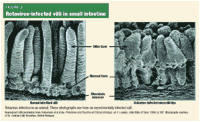Update on a high-morbidity infection: Rotavirus
Among children, rotavirus remains a leading cause of gastroenteritis and, globally, of death. Here's the latest on treatment and prevention, including vaccines in the offing.
Dr. Dennehy is director, pediatric infectious diseases, Hasbro Children's Hospital, and professor of pediatrics, Brown Medical School, both in Providence, R.I.
Staff editors: SUZANNE WOLFE, Managing Editor, and JOHN BARANOWSKI, Editor, Contemporary Pediatrics.
Dr. Dennehy is a recipient of research grants from Merck and GlaxoSmithKline. The manuscript reviewers and staff editors have nothing todisclose in regard to affiliations with, or financial interests in, any organization that may have an interest in any part of this article.
In the United States, rotavirus is a major cause of acute gastroenteritis, infecting nearly all children by age 4. It causes some 3.2 million episodes of diarrhea each year, resulting in 500,000 office visits, 60,000 hospitalizations, and at least 20 deaths annually.2 Rotavirus is responsible for as many as 50% of pediatric admissions to hospitals because of diarrhea and 20% to 25% of cases of pediatric diarrhea in outpatient clinics. During peak rotavirus season, the virus may be the cause of more than 75% of inpatient pediatric admissions for gastrointestinal illness.3

Epidemiology and pathophysiology

Rotavirus is transmitted person to person, primarily by the fecal-oral route. Children shed large numbers of viruses in stool, from 100 to 1,000 viruses per milliliter during acute illness. On average, children shed for seven days after onset of symptoms, but shedding may occur before symptoms develop and, in an immunocompetent host, can persist for as long as 21 days after symptom onset.
